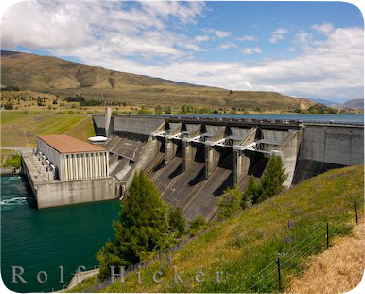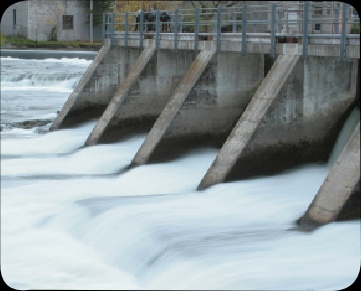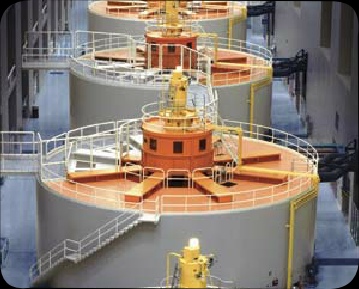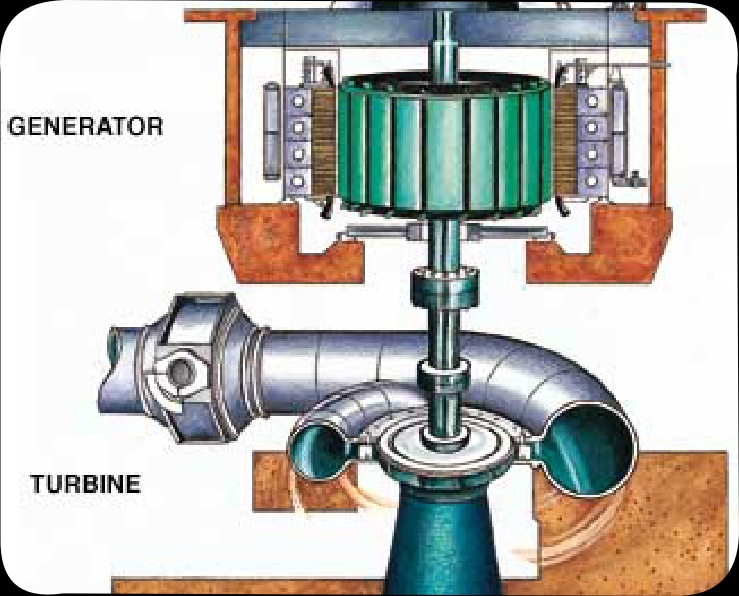



Hydroelectric systems can be connected to the main electricity grid, or can be part of a stand-




ABOVE: A typical illustration of a hydroelectric turbine generator. As the water flows through the lower portion of the system it turns a turbine, which in turn causes the generator to rotate by kinetic energy transferred through a central shaft. As the generated rotates; positive and negative magnetic brushes attached to the outside and inside of the generate produces alternating electrical current.
ABOVE: Hydroelectric dam
ABOVE: Hydroelectric dam spill way.
ABOVE: Electrical turbine generators producing electrical current as the flow of rushing water turns the blades of the turbine.
· Storage schemes: In storage schemes, a dam impounds water in a reservoir that feeds the turbine and generator, usually located within the dam itself.
· Run-
-
· Pumped storage: Pumped storage incorporates two reservoirs. At times of low demand, generally at night, electricity is used to pump water from the lower to the upper basin. This water is then released to create power at a time when demand, and therefore price, is high. Pumped storage is not a renewable application as it is reliant upon an electricity supply and energy losses are always involved when pumping the water. However, by providing a rapid supply of electricity in response to sudden changes in demand, it does have value in aiding the overall efficiency of the generation infrastructure.
Tidal barrage systems can, like run-
